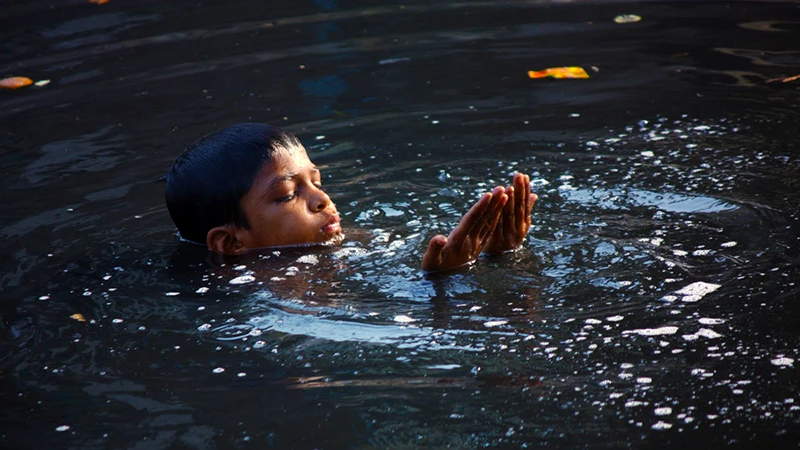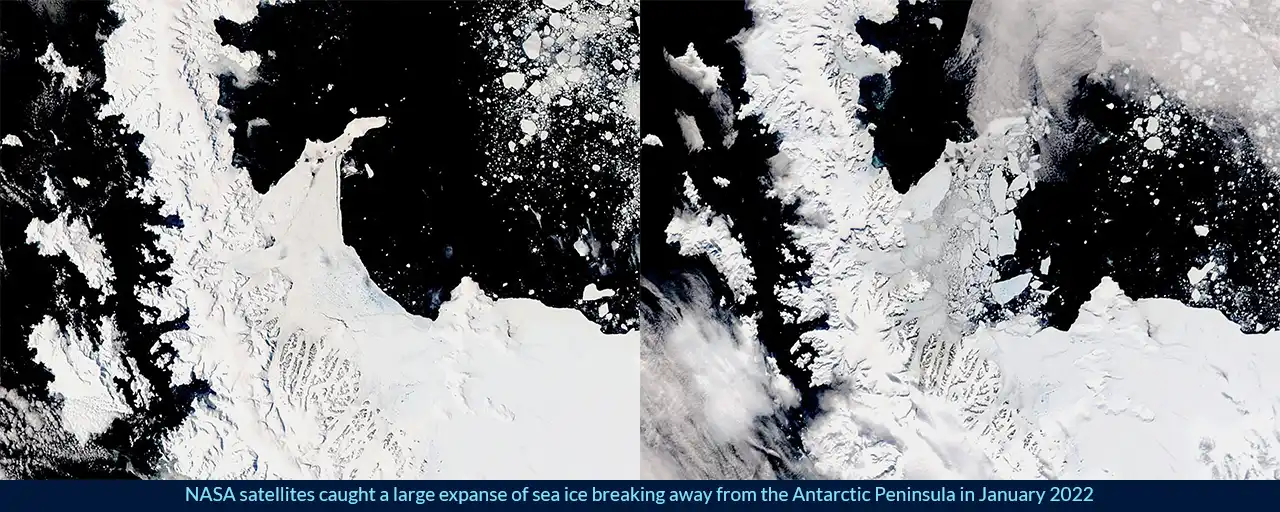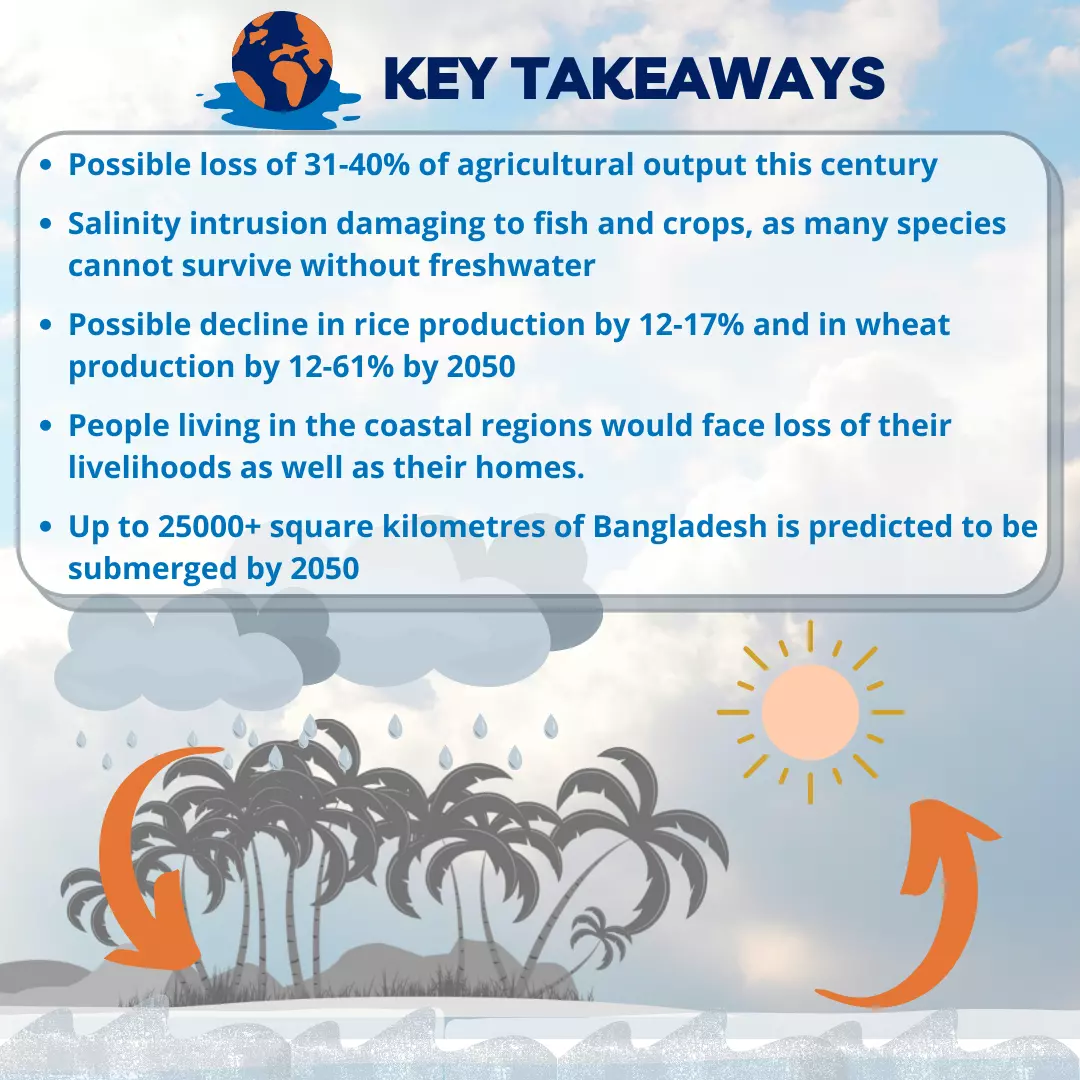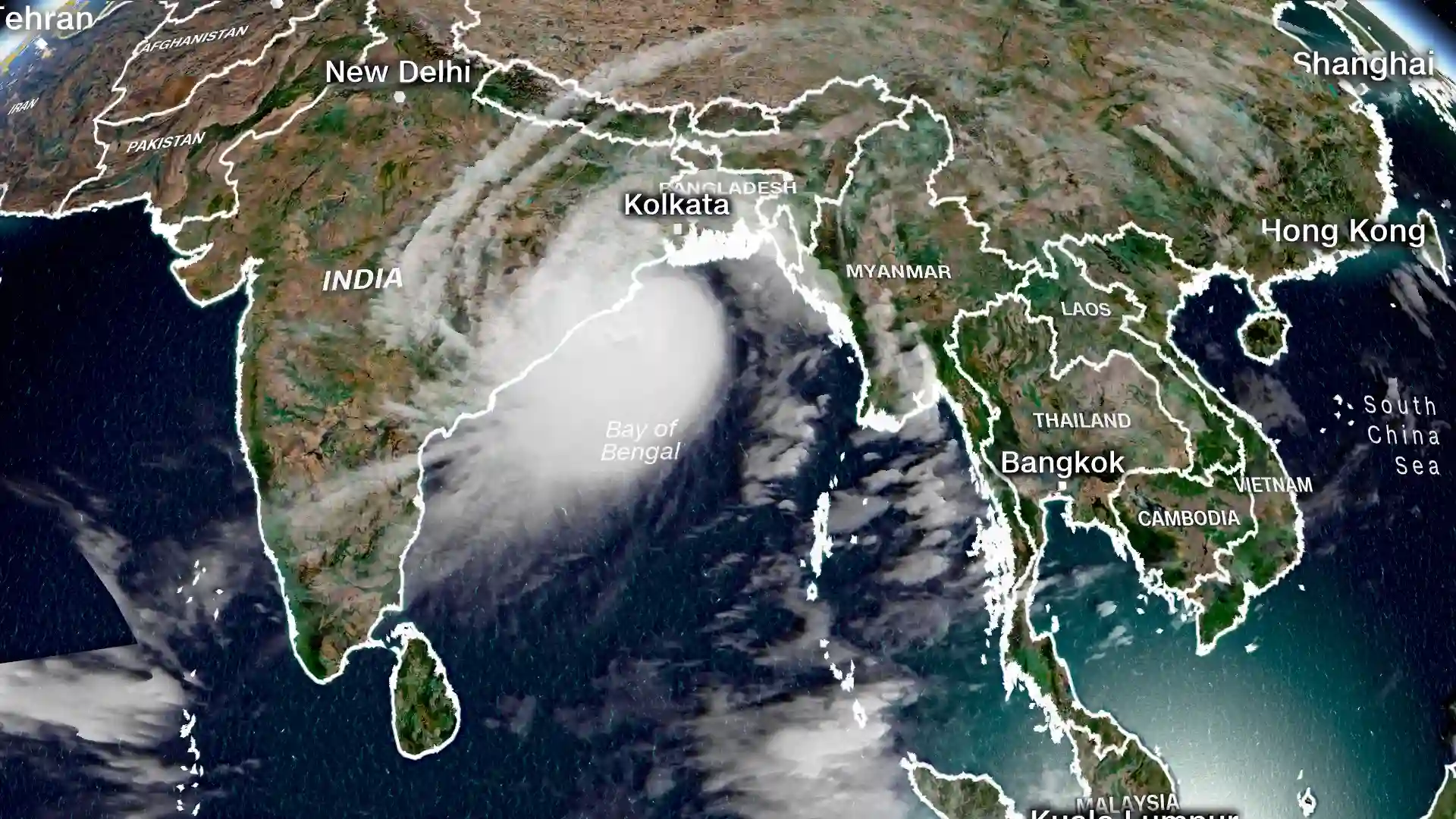GET IN TOUCH
- Please wait...

This article is part two of a three-part series that divides the impacts of climate change on land, air, and water in Bangladesh. It focuses on all the different ways in which the water cycle is affected by climate change and its impacts on the country.
Water covers 71% of the Earth’s surface and makes up 60% of an adult human body. Since the planet and species are so intertwined with water, any changes in the hydrological cycle directly or indirectly affect both. [1] Just to name a few instances, in 2021 heavy rainfall turned into all-consuming floods that washed away centuries-old homes in Europe, triggered landslides in Asia, and inundated subways in China. One of the main reasons for this amplification in intensity is the increased moisture content in the air‒mainly due to global warming. [2] Global warming strongly influences changes in precipitation intensity and patterns, melting rate of ice and snow, evaporation, soil moisture, and runoff. The changes due to global warming are most visible in the North and South Poles.

Arctic sea ice is lost at a rate of almost 13% per decade and just over the past three decades, an astounding 95% of the thickest ice in the Arctic has diminished. If emissions continue to rise unchecked, the Arctic could have absolutely no ice in the summer by 2040. The Arctic and Antarctic act as the world’s cooling system since the snow and ice there reflect heat back into space to counteract the heat absorbed in other parts of the world. While this itself contributes to the rise in temperatures, the thawing of permafrost‒ground that is permanently frozen‒agitates the climate even more.
According to scientists and research published in Nature Climate Change, permafrost contains potentially antibiotic-resistant bacteria, undiscovered viruses, and even radioactive waste from Cold War nuclear reactors and submarines. More than 100 diverse microorganisms in the Siberian permafrost ‒ just 3 meters deep ‒ have been found to be antibiotic-resistant. Researchers are worried that these micro-organisms could possibly start a new pandemic using the first viable hosts they come in contact with‒humans. Budding long-term consequences aside, permafrost stores massive amounts of methane, a greenhouse gas that is tremendously contributing to climate change already. When permafrost unfreezes, the heat increases from global warming, and this melts more ice again, creating a vicious cycle. [3]

There are also higher chances of shipwrecks and oil spills as new shipping routes open up in the Arctic. Wildlife such as polar bears, walruses, arctic foxes, snowy owls, reindeer, and many other species also suffer directly from land loss. [3] However, the most distressing impact of melting ice is sea-level rise, which is faced throughout the world‒especially in Bangladesh.
Different studies show that in Bangladesh, the sectors which are predicted to be the most affected by changes in water and water resources are agriculture, health, fisheries, biodiversity, and infrastructure. Further details of salinity intrusion are covered in the first part of this series. [4] While salinity intrusion is caused directly by sea-level rise, as it infiltrates the surface and groundwater, other factors such as cyclones and storm surges exacerbate the rate of intrusion.

Various storms and floods are recurrent disasters in Bangladesh. According to the National Adaptation Programme of Action of Bangladesh report, both coastal flooding (from ocean and stream water), and inland flooding (waterway/riverway/rainwater) is expected to keep increasing in frequency. [5] Changes in river bed shape due to heavy sedimentation, changes in morphological processes, and drainage congestion are the key causes of flooding. The floods are getting intensified mainly because of heavier rainfall, and rivers being overfilled from climate change-induced melting of Himalayan glaciers. The rapid increase in water levels in the Ganges-Meghna-Brahmaputra River Basin is destroying entire villages and hundreds of thousands of livelihoods. On the other hand, cyclones are escalated due to the funneling effect caused by the geographical location of Bangladesh. The Bay of Bengal narrows towards its northern shore where it meets the south coast of Bangladesh which directs cyclones toward the coast. [7]

In 2020 Cyclone Amphan‒the strongest cyclone recorded in Bangladesh’s history‒ took the lives of 80 people, left thousands homeless, and destroyed at least 176,007 hectares of agricultural land in 17 coastal districts. [7] These floods and storms take a huge toll on Bangladesh’s economy as losses worth US$2.2 billion occur on average per year, which is equivalent to 1.5% of the total GDP. [8]
According to IPCC, due to climate change and increasing demand for water, about 25% of the population will live with water scarcity by 2050. [6] Between 2012 and 2050, in the southwest coastal zone of Bangladesh, the total freshwater river area is expected to decrease from 40.8% to 17.1%. [9] Freshwater scarcity is a major problem in Bangladesh which leads to a high diarrheal disease rate. Dengue, hypertension associated with heat stress, asthma, and skin diseases are also increasing in Bangladesh. While there are no definitive links, conditions associated with climate change and its impacts on water supply, sanitation, and food production, generate favorable environments for the incidence and spread of such diseases. There could be 2.2 million cases of E. coli in Bangladesh by 2100. International Union for Conservation of Nature (IUCN) predicts drought is another problem that will be prevalent in the northwest zone of Bangladesh as well as the districts of Narail and Gopalganj in the south and Magura, Jessore, Rajbari, Faridpur, and Pabna to Sirajganj, Natore, and Rajshahi in the north. [10]
The government is already looking into various ways of adapting to the climate change impacts and the first step involves investing in nature-based solutions like watersheds and improving the waterways for a better groundwater recharge system. The second priority is providing a clean water source and improving accessibility for safe drinking water. WASA already has water ATM booths that do this for a minimal price and this concept has already been used in other countries like the USA. However, there is a long way to go to ensure all of Bangladesh has access to clean water. As of 2018, 50 million people in Bangladesh were at risk of exposure to arsenic from drinking contaminated water from tube wells. The third priority is to mobilize resources to prepare communities to be water-secure by proving greater accessibility, accountability, and reliability of WASH services during frequent hazards. Last but not the least, improving water governance and finance allocation is key to empowering vulnerable communities as more funds need to be dedicated to coastal developments. [11]
Many inventive solutions and measures are being taken such as collapsible houses and floating houses that now exist to adapt to the environmental hazards on the coasts. However, the government needs to look inwards and regulate anthropological pollution to ensure the water bodies we have inland are not lost as we keep fighting an uphill battle against nature.
In the third and final part of this series, we will focus on the effect of climate change on air in Bangladesh and go into more detail about the impacts of gaseous emissions and global warming.
Lamisa Mustafina, Content Writer, and Sanjir Ali, Senior Business Consultant & Project Manager, at LightCastle Partners, have prepared the write-up. For further clarifications, contact here: [email protected]
Our experts can help you solve your unique challenges
Stay up-to-date with our Thought Leadership and Insights